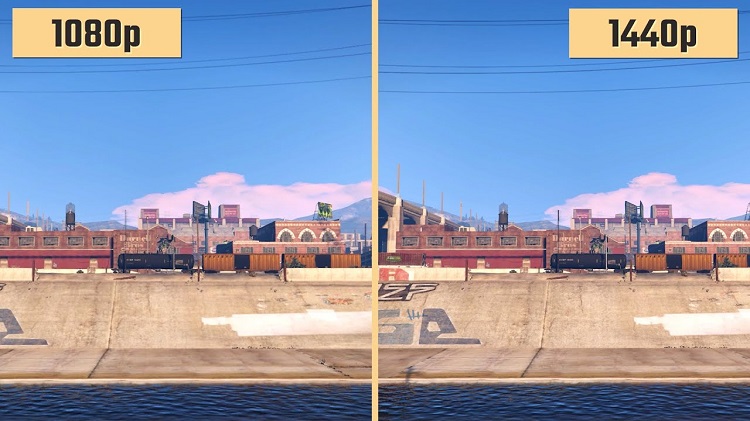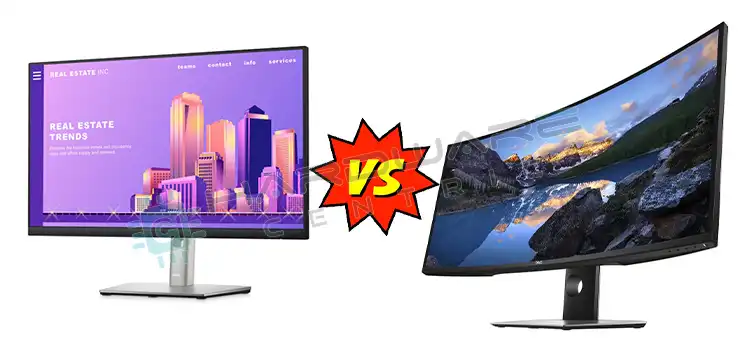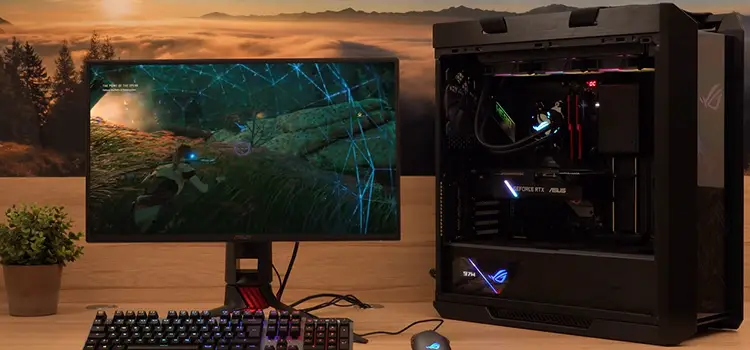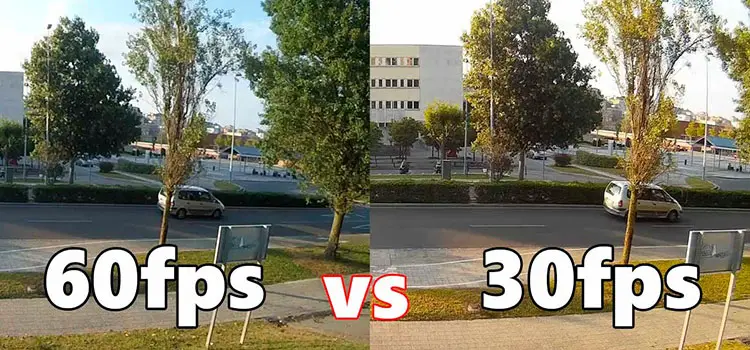1080p 240 Hz vs 1440p 144hz Refresh Rate Screen | Isn’t a 240 Hz Monitor Good Enough?
For a vast majority of casual and competitive gamers, 1440p 144Hz is too pretty much capable of providing a smooth experience in gaming. However, if you are aiming to get into the eSports scene, and your rig is powerful enough to produce enough fps, then getting a 1080p 244Hz can be a better investment.
If you are among the many who are having trouble choosing between 1080p 240Hz and 1440p 144Hz, you are currently at the right place. This article will help you to decide which one can be better for you along with if better fps is good enough than having a better resolution.
Therefore, without wasting time, let’s get into them!

1080p 240hz vs 1440p 144hz Monitor – Comparison ?
The monitor is of great importance to gamers who like to derive the most out of the game. When selecting a gaming monitor, clarity is not the only thing a buyer has to consider. There are other factors such as the refresh rate, response time, etc.
For easier understanding, here is a quick comparison table of both monitors. Have a look at them –
| Specification | 1080p 240 Hz | 1440p 144 Hz |
| Resolution | 1920 x 1080 | 2560 x 1440 |
| Refresh Rate | 240 Hz | 144 Hz |
| Aspect Ratio | 16:9 | 16:9 |
| Response Time | 1 ms | 1 ms |
| V-sync (Built-in) | G-sync | None |
As you can see, you can notice no significant distinction between these 2 monitors except for their resolution and refresh rate. But they have some and we are sharing the relevant differences in the next section.
1440p 144hz and 1080p 240hz Monitor – Difference
Now that you have compared these two displays, it is time to find out their overall differences.
1. Refresh Rate
The refresh rate of a monitor is always the first thing a veteran gamer looks at. It shows how many times a display can show an image in one second. The more the refresh rate, the more buttery smooth experience you will get.
However, between 1440p 144Hz and 1080p 240Hz, the situation gets a little bit tricky. The 240Hz will feel smoother than 144Hz and it will help you land that tricky headshot more easily. But, the difference will not be much noticeable as it is in the case of 60Hz and 144Hz. For a casual gamer, 240Hz will be overkill. Even a competitive gamer may struggle to perceive any noticeable difference between the two.
Moreover, your rig has to be powerful enough to constantly produce a stable frame rate higher than 240 fps to use your 240Hz monitor to its full potential. If your hardware can push that limit and you aspire to get into the competitive scene, then a 1080p 244Hz can be a good investment.
The display you choose also depends on the type of games you play. If you play fast-paced like Fortnite or Apex Legends, a 244Hz display slightly increases the fluidity and can be a better choice.
2. Resolution

When it comes to the resolution, 1440p is surely one step ahead of 1080p. However, if you have decided to settle for a 1440p 144Hz monitor, that extra QHD resolution will contribute to more sharpness and visibility. The gamers will see the difference in resolution when compared to a 1080p display.
Although, that extra resolution will put more pressure on your rig if you want to take full advantage of a 2k display. In case of sheer image quality, a 1440p 144Hz beats a 1080p 240Hz display any day.
3. Aspect Ratio
Even though both of the monitors have an aspect ratio of 16:9, they can be differentiated by the screen size. The perfect display size is a 23 or 24-inch display for 1920×1080 pixels. If the screen size gets bigger, the pixel density gets lower. As a result, you will see individual pixels while staying closer to the monitor.
On the other hand, a 26 or 27-inch display is better for 2560×1440 pixels. Because it has around 1612800 pixels extra than 1080p. So, a bigger screen size gets suitable for higher resolution.
4. Virtual Synchronization (V-sync)
It is undeniable that 240 Hz is absolutely one of the highest refresh rates. And to maintain such a refresh rate, you will need to make use of sync tech. It will help to enhance your viewing experience far better.
There are a number of monitors that comes with this feature with a specific name, such as G-sync. It synchronizes the refresh rates of the monitor with the GPU to prevent shredding, tearing, etc issues, and ensure optimal smoothness of graphics.
Here, 1080p 240 Hz offers the in-built v-sync as it can be necessary for users to apply in certain situations. The 144 Hz monitor usually does not require such a v-sync.
Which One Is Better Between 1080p 240 Hz and 1440p 144 Hz?
If we consider all these factors and combine them, we can deduce that the hefty price tag associated with a 240Hz monitor is not worth it. For a hardcore hobbyist gamer, a 1440p 144Hz would be a perfect combination of resolution and refresh rate given that modern mid-tier rigs are capable of producing 150+ fps constantly.
Frequently Asked Questions (FAQs)
What is better 1440p 165 Hz or 1080p 240 Hz?
The answer is pretty simple. 1440p 165 Hz is better than 1080p 240 Hz. First of all, 1440p is offering much more pixels to ensure greater pixel density. This way the video will be more vibrant to watch. Moreover, the 165 Hz is not a bad refresh rate either. It is good enough to provide a smooth and faster viewing experience.
Is 240 Hz good for gaming?
Yes, it is. 240 Hz is a considerably very good refresh rate for gaming. It makes your gameplay faster, more fluid, and mesmerizingly smooth. Technically, it is the number o how many times per second your display can draw a new image. And undoubtedly, 240 is a very good number. So, 240 Hz is pretty good for gaming.
Conclusion
A 1440p 144Hz display is by no means a downgrade from a 1080p 244Hz monitor. The former will offer crispier images with buttery-smooth transitions in games at a reasonable price point. The difference is barely noticeable to justify the high price point of a 1080p 144Hz display. Therefore, a 1440p 144Hz is practically a steal for a vast majority of casual and competitive gamers.
Subscribe to our newsletter
& plug into
the world of PC Hardwares


![[Fix] 144 Hz and 60 Hz Dual Monitor Issues (100% Working)](https://www.hardwarecentric.com/wp-content/uploads/2021/10/144-Hz-and-60-Hz-Dual-Monitor-Fix.jpg)
![[Fix] Monitor Shuts off but Computer Stays On (100% Working)](https://www.hardwarecentric.com/wp-content/uploads/2022/12/Monitor-Shuts-off-but-Computer-Stays-On.jpg)


